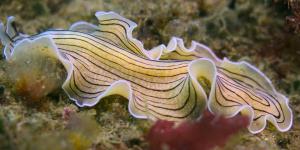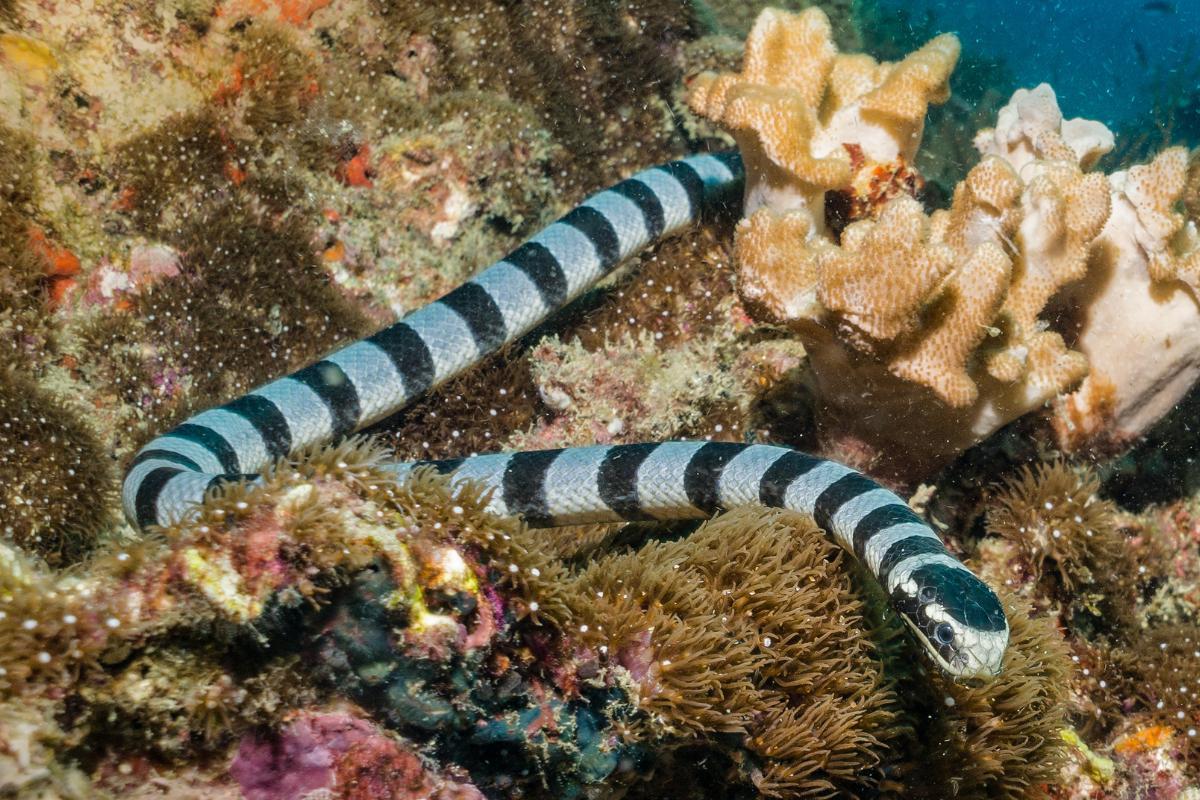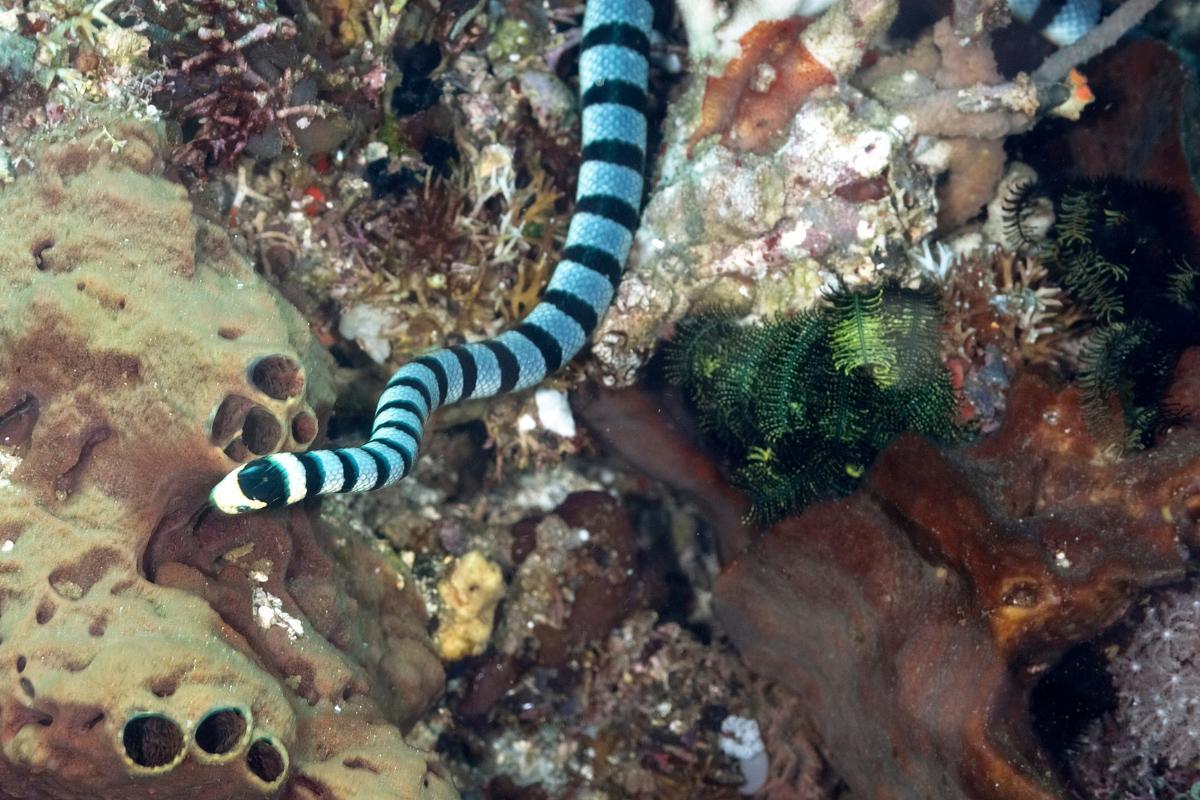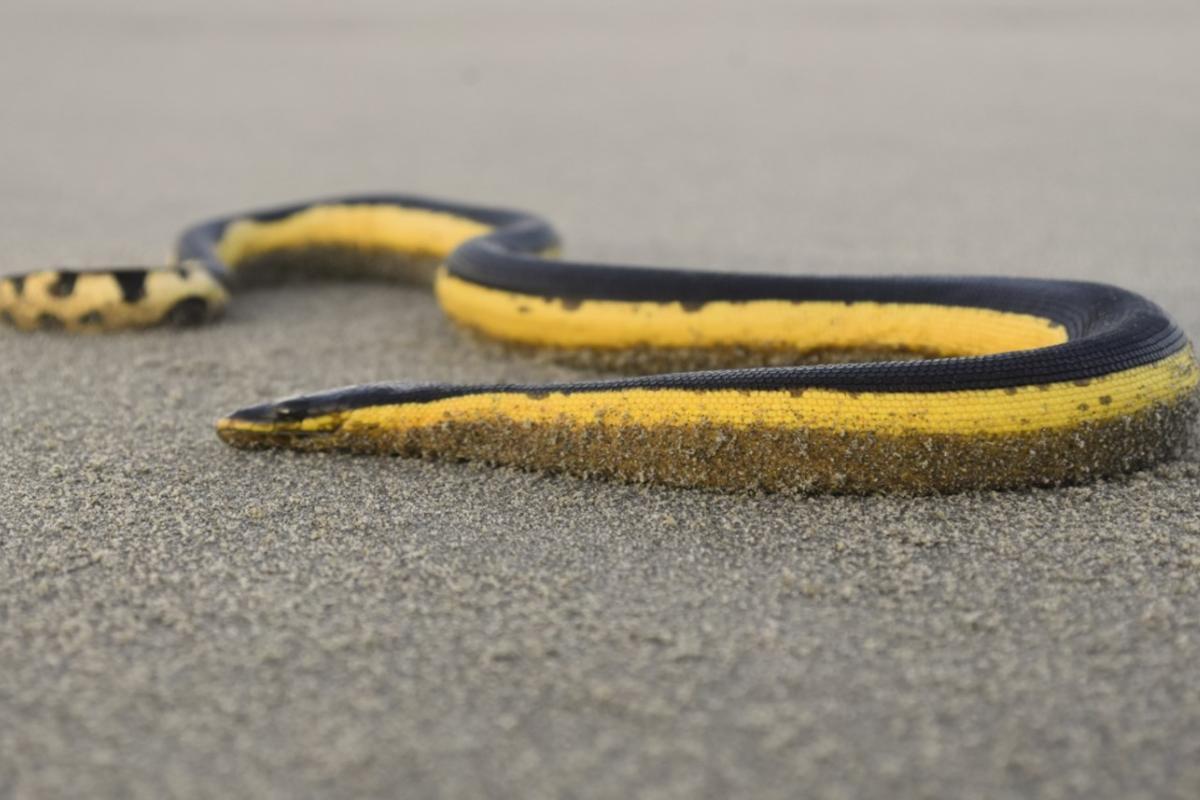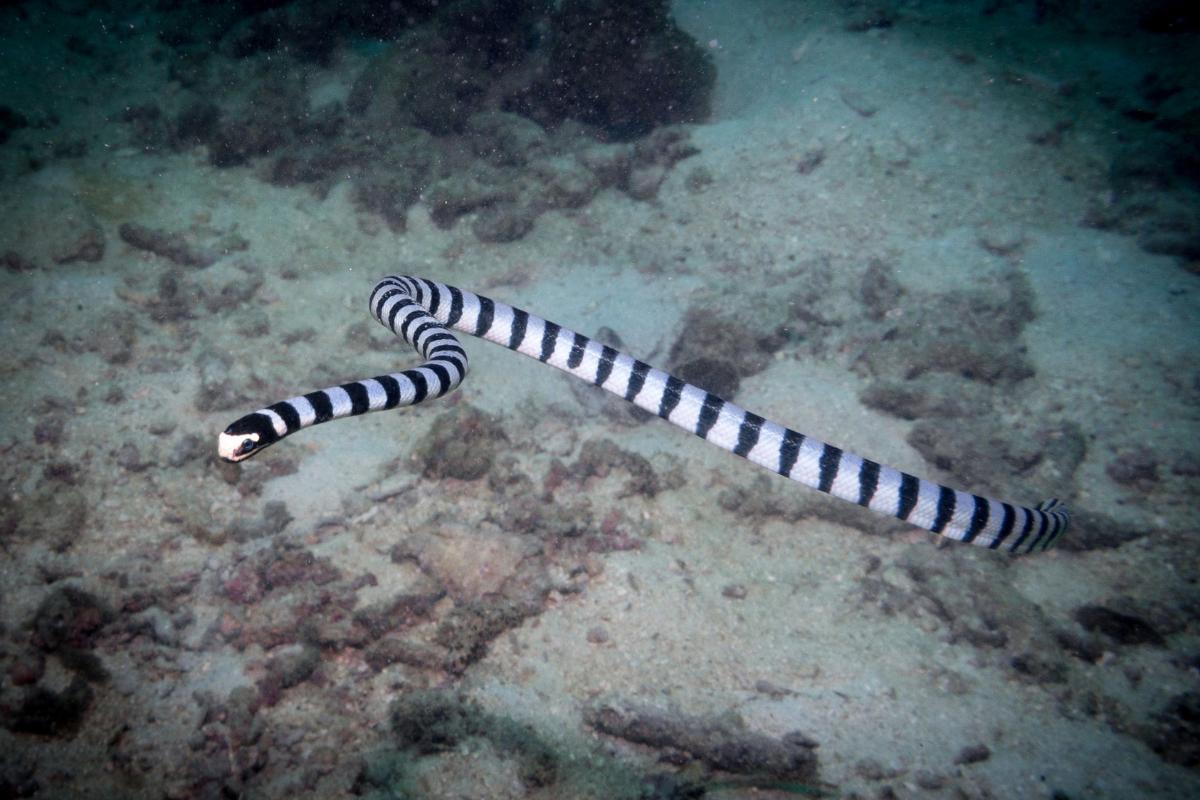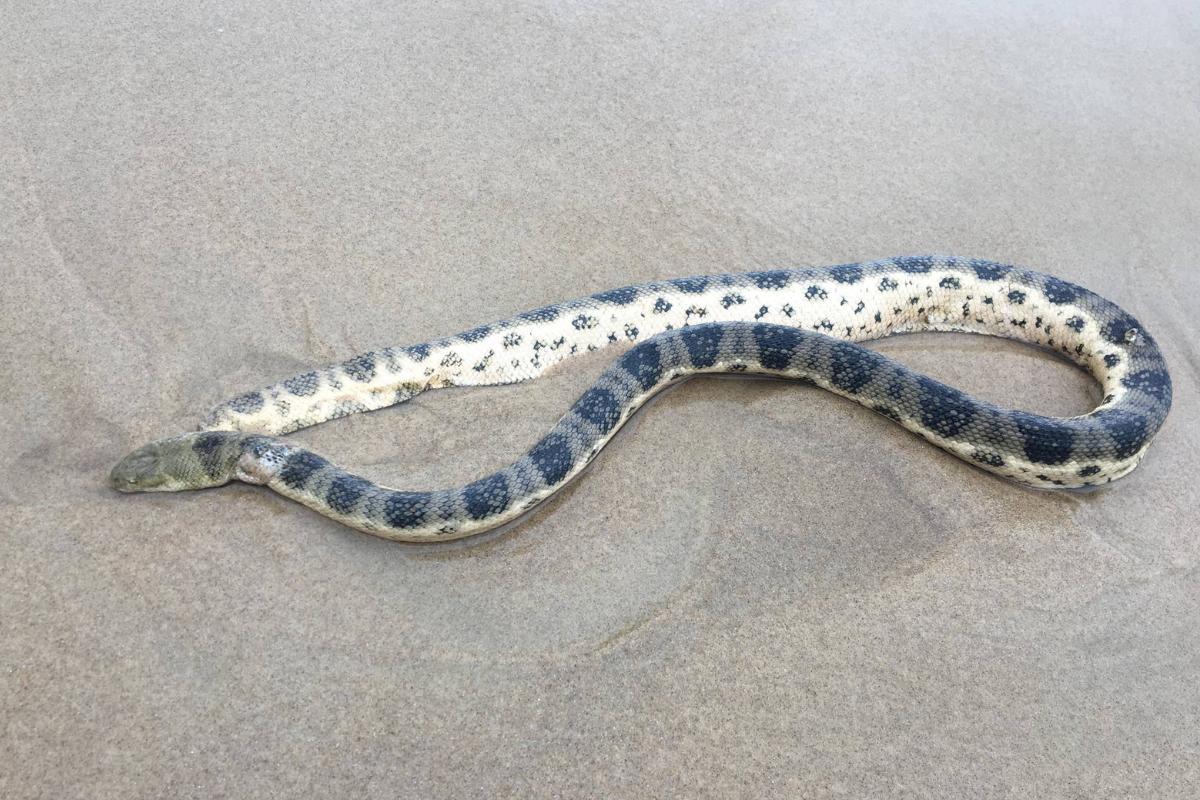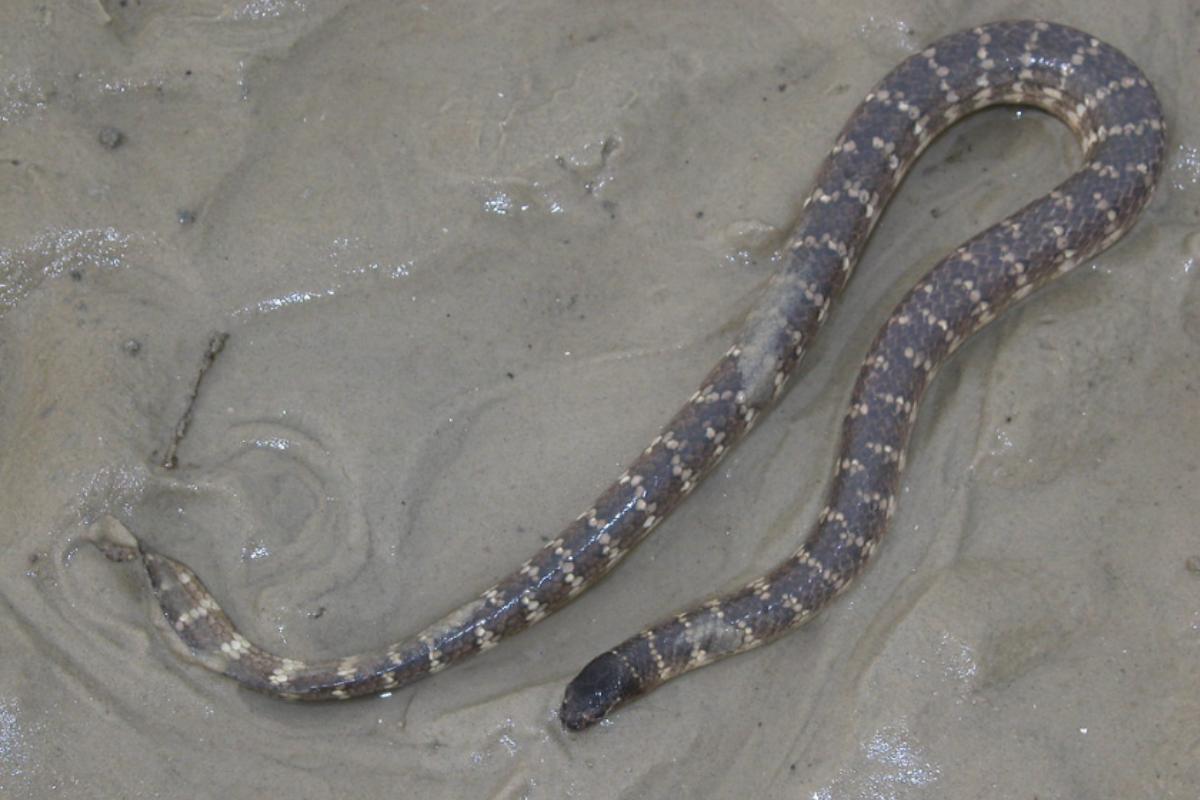Sea Snakes - Characteristics and Examples

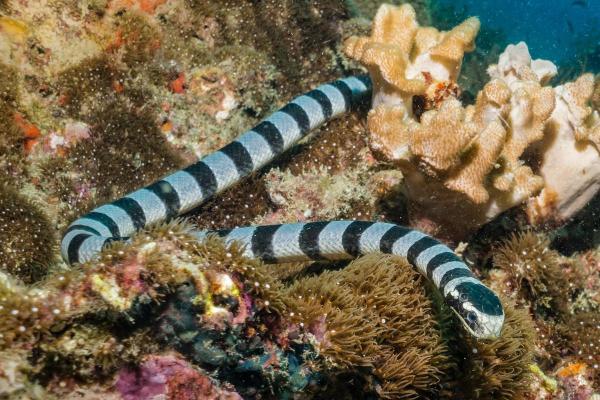
True sea snakes are venomous aquatic snakes belonging to a subfamily of Elapidae known as Hydrophiinae. Another subfamily of sea snake known as Laticaudinae contains one only genus and are known as sea kraits. Hydrophiinae contains all the other sea snakes, as well as many other venomous land snakes. Marine snakes live mainly in coastal waters of the Indian and Pacific oceans, breathe through their lungs and skin, and have a paddle-shaped tail, among other distinctive features. thedailyECO shares more sea snakes characteristics and examples. We also look at the danger of these reptiles by finding out how venomous are sea snakes.
What are sea snakes?
Sea snakes are vertebrates that constitute two subfamilies of venomous snakes of the Elapidae family. Their native range covers warm coastal waters of the Indian and Pacific Oceans. For this reason, they are also often known as coral reef snakes. Elapids have evolved from terrestrial ancestors over millions of years and most of them are highly adapted to aquatic life, to the point of being unable to move on land.
All true sea snakes are marine reptiles, with one notable exception. The only freshwater sea snake in the subfamily Hydrophiinae is the Lake Taal snake (Hydrophis semperi), sometimes known as the freshwater sea snake. This snake is very rare and only found in one lake in the Philippines. There are some species of sea krait which can live in brackish waters or even some freshwater areas.
Sea kraits of the genus Laticauda have some distinct differences between sea snakes of the family Hydrophiinae. The first thing is that sea kraits are only semiaquatic, with many of them venturing onto land for the purpose of laying eggs. True sea snakes have a flattened body for a life lived exclusively in the water. Sea krais have a body more similar to terrestrial snakes, except for the a paddle tail which allows them better swimming ability.
In addition to sea snakes, our related guide shares the different types of aquatic reptiles you can find.
Characteristics of sea snakes
To better understand what sea snakes are like, we will look at the characteristics of true sea snakes and sea kraits. We start with true sea snakes and then look at what differences can be seen in sea kraits:
- Species: the subfamily Hydrophiinae contains 38 genera, 17 of which are types of sea snake and which contain 62 individual sea snake species.
- Size: adults typically measure between 47-59" (120-150 cm) in length, with the exception of the yellow sea snake (Hydrophis spiralis) which can reach up to 3 metres in length.
- Lung breathing: they do not have gills, so they depend on their lungs to breathe. They need to break the surface of the water to do so. They have nostrils with special valves that allow them to expel water. In addition, their trachea can extend to the nasal opening on the roof of their mouth. This adaptation is key, as it allows them to breathe at the surface even when their head is partially submerged.
- Skin breathing: most sea snakes can absorb oxygen through their skin, which is unusual for reptiles due to their thick and scaly skin. Experiments with the yellow-bellied sea snake (Hydrophis platurus), a species that lives in the open ocean, have shown that it can obtain up to 25% of the oxygen it needs this way, allowing it to stay submerged for longer.
- Sublingual glands: as they live in an environment where the concentration of salts is high, sea snakes have posterior sublingual glands that allow them to eliminate their excess salt through the action of their tongue.
- Venom: all sea snakes are venomous, with the exception of those found in the genus Emydocephalus.
- Tail: they have a paddle-shaped tail which is flattened laterally, allowing them to swim more effectively.
- Internal organs: many species have laterally compressed organs, especially in those snakes with pelagic habits. This adaptation has caused the ventral scales to be reduced in size, which reduces their ability to move on land.
- Diet: most feed on fish, with eels often making up a large part of their diet. Some may eat mollusks and crustaceans.
- Reproduction: true sea snakes are ovoviviparous, meaning their embryos develop in eggs which remain inside the mother's body. They only lay the eggs in the water when they are ready to hatch.
Differences between true sea snakes and sea kraits
Sea kraits are very similar to true sea snakes of the subfamily Hydrophiinae, but there are some key differences:
- Semiaquatic behavior: unlike true sea snakes, sea kraits can go onto land. This makes them semiaquatic, although most of their time is spent in water.
- Type of water: most sea kraits live in marine environments, but some can live in brackish or even freshwater environments. The Lake Taal snake is the only true sea snake that lives in a freshwater environment.
- Ventral scales: sea kraits retain their ventral scales because they need them to move on land.
- Mating: sea kraits usually mate on land, forming something known as a mating ball to do so. This is when multiple males gather around a female to compete for fertilizatin.
- Egg laying: sea kraits are oviparous. This means they lay their eggs outside the body before the embryos develop. When the baby sea kraits hatch, they return to the sea.
Although there are differences, looking at our related article, you will see that the anatomy of snakes is very similar when we compare terrestrial and aquatic snake species.
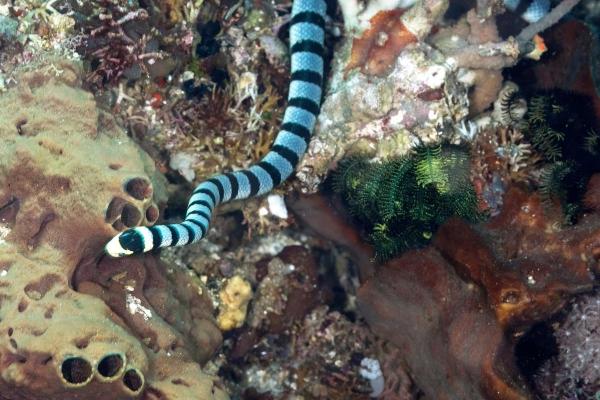
Are sea snakes dangerous?
Aquatic snakes are highly specialized predators that use their venom to capture prey. Their venom is myotoxic, meaning it affects the muscles and organs of their prey. Once bitten, the prey is rapidly paralyzed and tissue necrosis starts to develop. It is also a nephrotoxic venom, meaning it directly affects the kidneys. The only exception is the sea snakes of the genus Emydocephalus.
The most venomous species is known as the hook-nosed sea snake or beaked sea snake (Enhydrina schistosa). It is estimated that only 0.02 mg of its venom per kilogram is enough to kill its prey, a smaller amount than that required by the most lethal terrestrial snakes. The latter usually need between 0.03 and 0.04 mg to cause the same effect.
Although venomous, sea snakes are not aggressive and rarely interact with humans. Their behavior is usually evasive and they only bite in situations of stress or handling. As animals adapted to marine life, they play a fundamental ecological role in coastal and oceanic ecosystems, helping to regulate populations of fish and other organisms.
We look at some examples of sea snakes below. Before we do, you may want to learn about other toxic marine life with our article sharing the most venomous fish species.
Yellow-bellied sea snake
The yellow-bellied sea snake (Hydrophis platurus) is a highly venomous sea snake species which is widely distributed species throughout the Pacific Ocean. It has a flat, elongated head and medium-sized eyes with round pupils. It is dark gray, with yellow lateral lines and narrow ventral scales. The tip of the tail is usually yellow with dark gray markings. Threats to their population are minor, but include bycatch in squid fisheries, ghost fishing nets, and pollution.
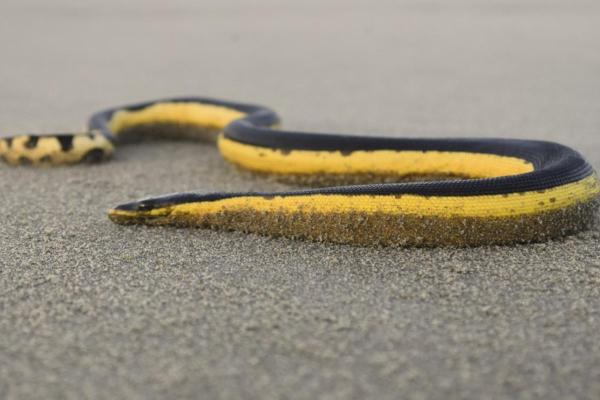
Yellow-lipped sea krait
Also known as the colubrine sea krait or banded sea krait, the yellow-lipped sea krait (Laticauda colubrina) inhabits tropical waters of the Indo-Pacific Ocean. Unlike true sea snake species, it retains the ability to move on land where it rests and reproduces. Its body is elongated, with distinctive black bands on a yellow or pale blue background. It is a species with a potent venom, but calm behavior.
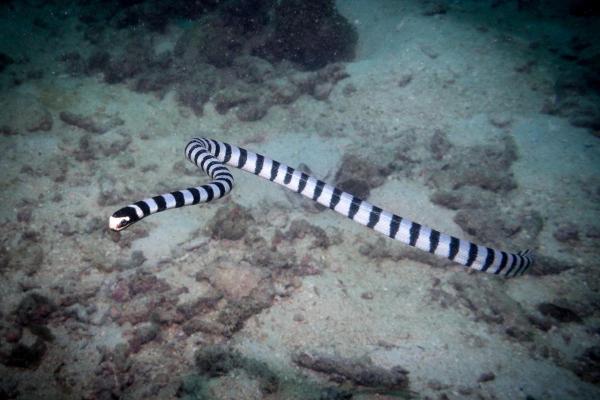
Olive-headed sea snake
Also known as the greater sea snake, the olive-headed sea snake (Hydrophis major) is a species that inhabits coastal waters of the Indian Ocean and the western Pacific. It has a long and laterally compressed body, adapted to a exclusively aquatic life. Its coloration varies between greenish and yellowish tones, with a less marked pattern than other sea snakes. It is venomous and feeds mainly on fish.
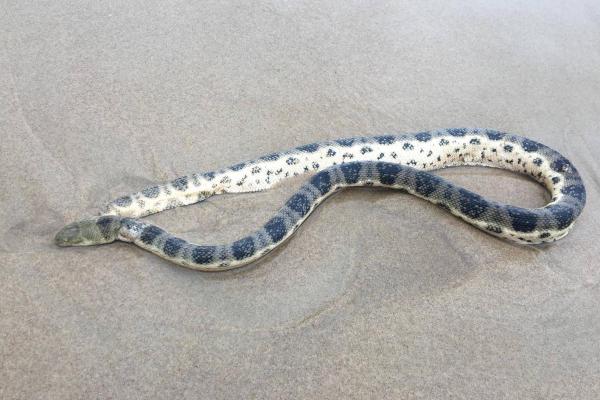
Short-nose sea snake
Commonly known as the short-snouted sea snake (Aipysurus apraefrontalis), this type of sea snake is native to Australia. It is also sometimes known as the Sahul reef snake. They are long-lived and slow-growing, reaching up to 24" (60 cm) in length. Their head is short and pointed and they have darker purplish-brown bands over the body.
This type of sea snake is now considered locally extinct on Ashmore and Hibernia Reefs. However, recent genetic and morphological studies and analysis have revealed resident subpopulations of A. apraefrontalis in coastal habitats in Western Australia encompassing Exmouth and Broome.
Now that you know more about sea snakes and sea kraits, you may be interested in our related article which asks do snakes have a backbone?
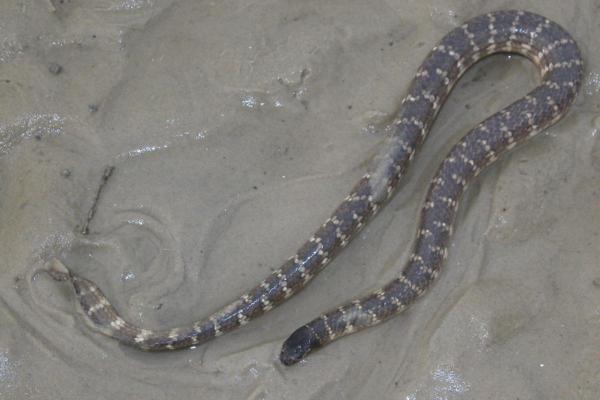
If you want to read similar articles to Sea Snakes - Characteristics and Examples, we recommend you visit our Wild animals category.
- IUCN. (2024). The IUCN Red List of Threatened Species.
https://www.iucnredlist.org

